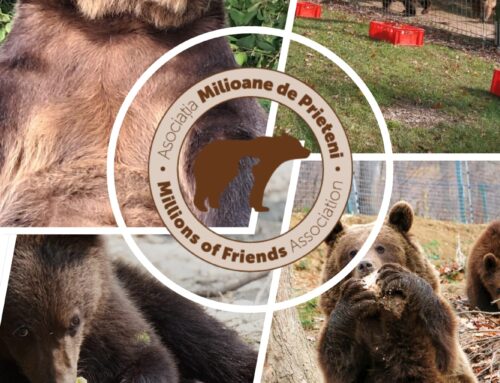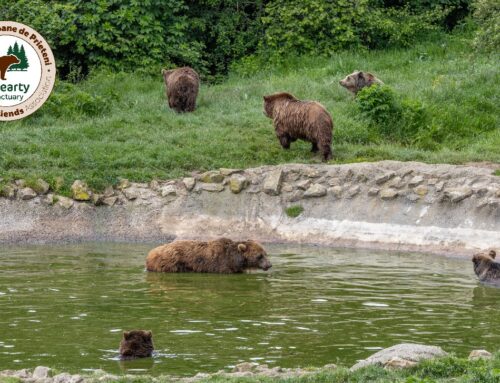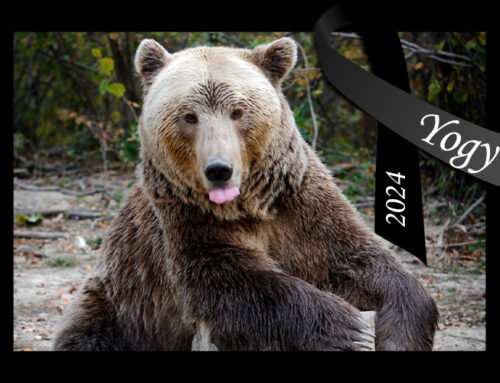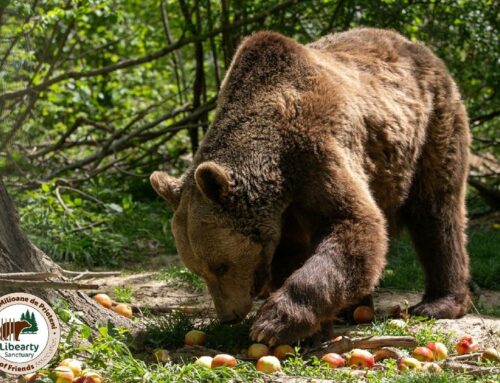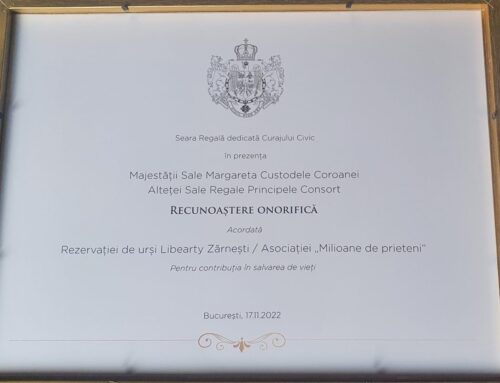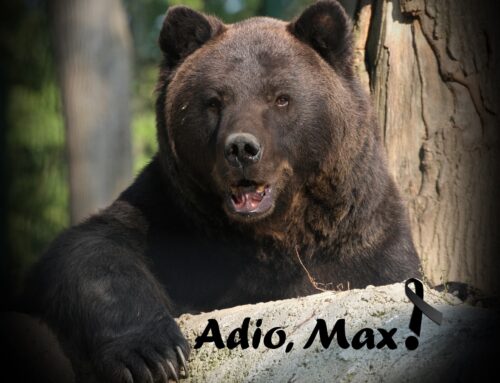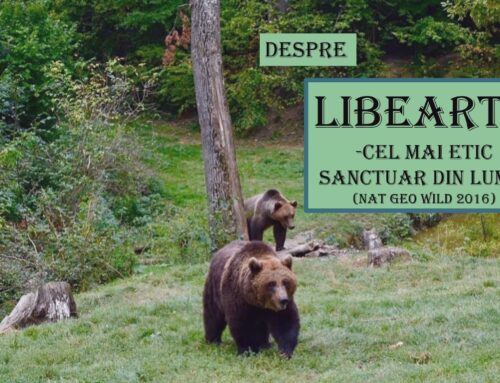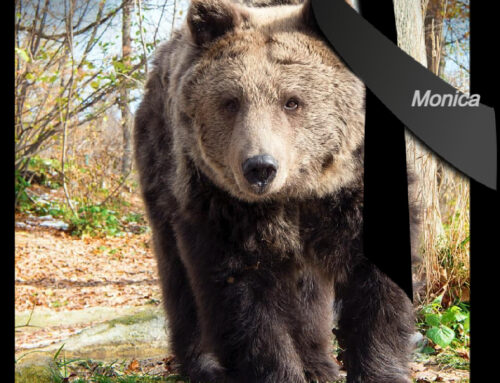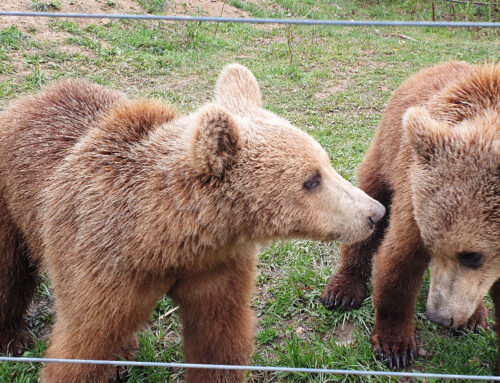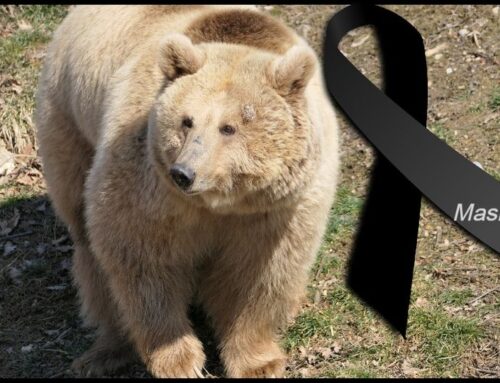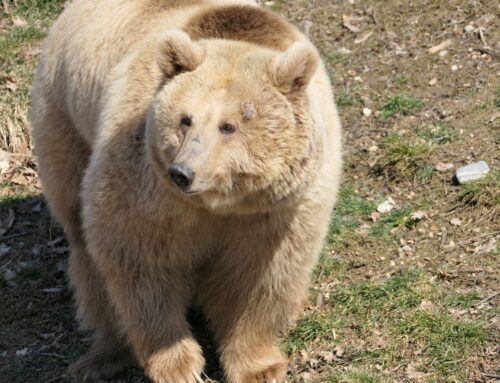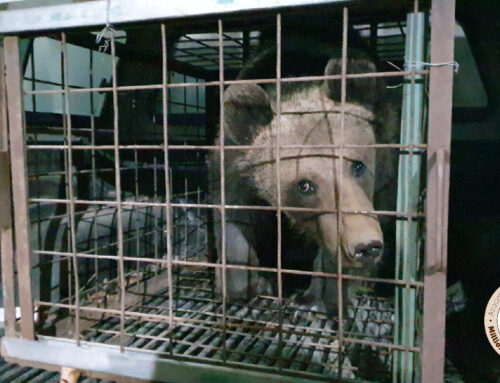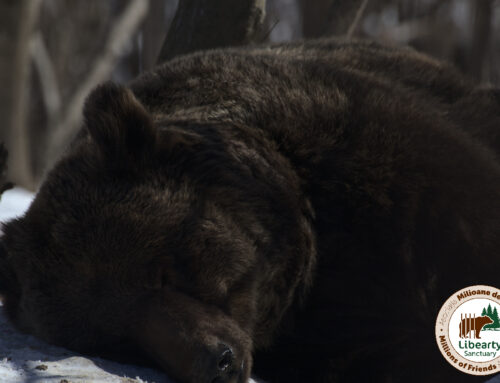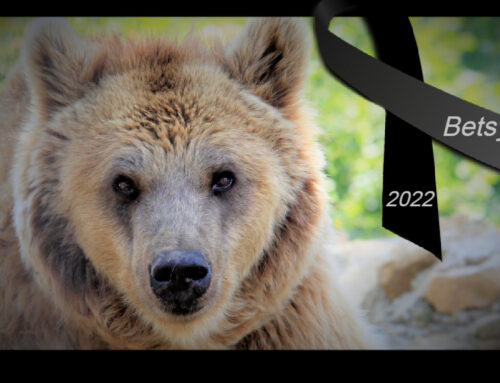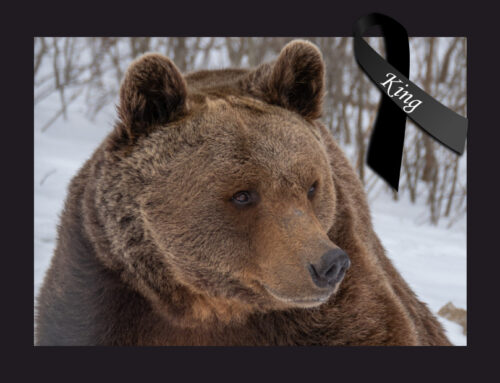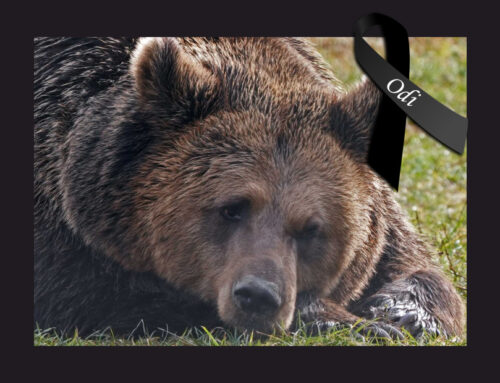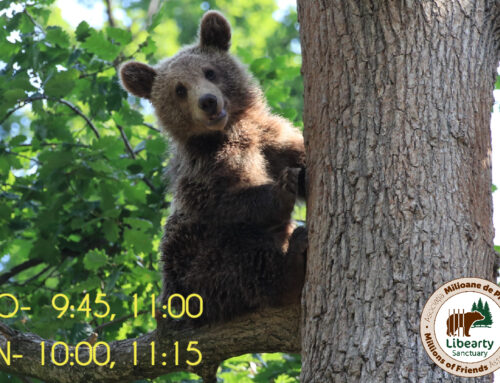

Squirrels don’t hibernate—this is known by all those who are passionate about natural curiosities. However, because squirrels are usually hiding in their hollows, they can hardly be seen during the winter. A snapshot captured in the second enclosure is living proof that squirrels can work in the snow as well. The acrobat from this image was photographed as he was running with a ball of threads in his mouth. Most likely, due to the low temperatures recorded in the sanctuary (–33 degrees Celsius), the little gray animal felt the cold. The peewee will use the fur as upholstery for his house—a kind of polystyrene insulation, if we make a comparison with our world. Looking closely, we can observe that the collected material is not dry grass but threads that could come from bear fur. The hypothesis is plausible: the bears shed and leave dead threads behind—a great thermal insulator. Without knowing, the bears are helping the squirrels and birds to keep their homes warm.
Squirrels as pets?
This nimble and hopping squirrel is not afraid of bears, with whom he shares the soil and oaks. The ”red” squirrel is known for friendly behavior—he’s not afraid to come into contact with humans or other animals. So in many countries, squirrels have become pets.
Do you really like squirrels? Think carefully before buying one as a pet. There are special farms and breeds adapted to coexist with man, but you must know that there’s a big behavioral difference between squirrels and cats or dogs. Get more information from specialists and experienced owners and find out whether you can provide what squirrels need. Then ask yourself if a squirrel can provide you what you want from a pet—affection, play, and so forth.



